As Spring dips into its vibrant palette and paints its way across the landscape, there’s no better time to celebrate the Houston native plants that embody the spirit and resilience of our region. From the iconic waves of bluebonnets that blanket the countryside to the striking blooms of Turk’s Cap, Houston’s flora offers an astonishing diversity that not only enchants the senses but also supports local wildlife. Whether you’re a seasoned gardener or simply someone who appreciates the natural beauty of Houston, we hope you are inspired to explore and embrace the native plants that make spring in Texas truly unforgettable.
The Loveliest Native Plants to Spruce Up Your Houston Garden
Indian Paintbrush (Castilleja indivisa)
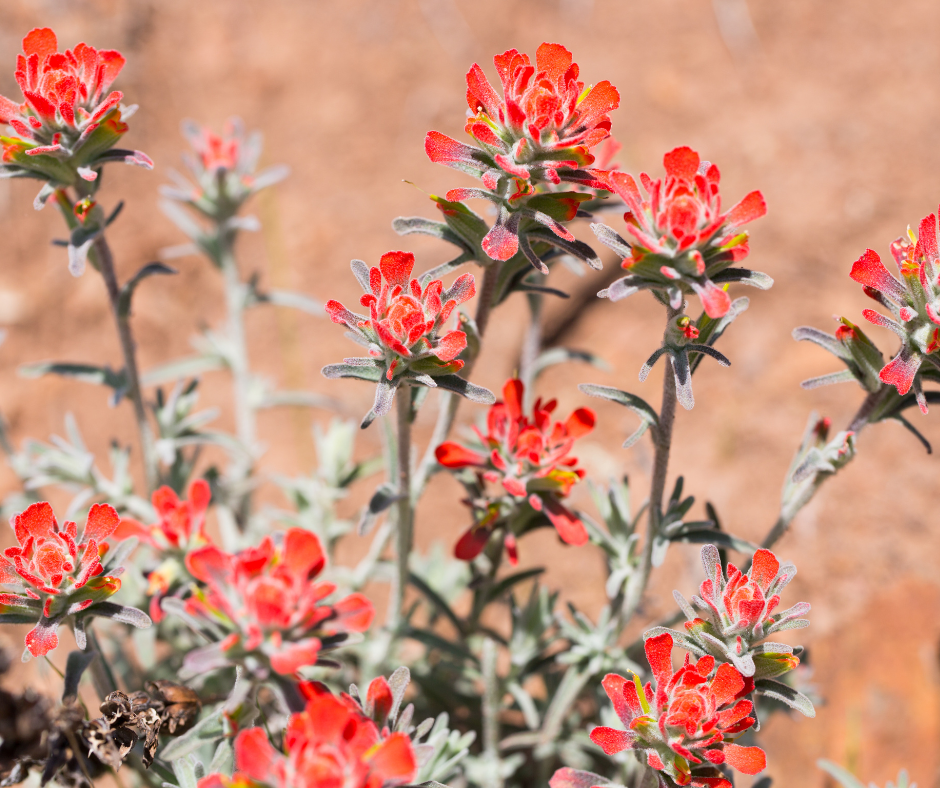
First on our list of Houston plants is Indian Paintbrush (Castilleja indivisa). With its striking red-orange bracts, it is a companion to the bluebonnet in both habitat and beauty. It prefers well-drained soils and full sun, ideal for natural meadows or wildflower gardens. Planting sometime between the fall and late winter allows them to bloom alongside bluebonnets in spring.
The Indian Paintbrush is known for its unique relationship with other plants, as it partially relies on them for nutrients, making it a fascinating addition to the garden. It attracts pollinators like bees and hummingbirds, and its vibrant color is said to represent the blood of warriors in Native American legend, adding a layer of depth and history to its presence.
Texas Lantana (Lantana urticoides)
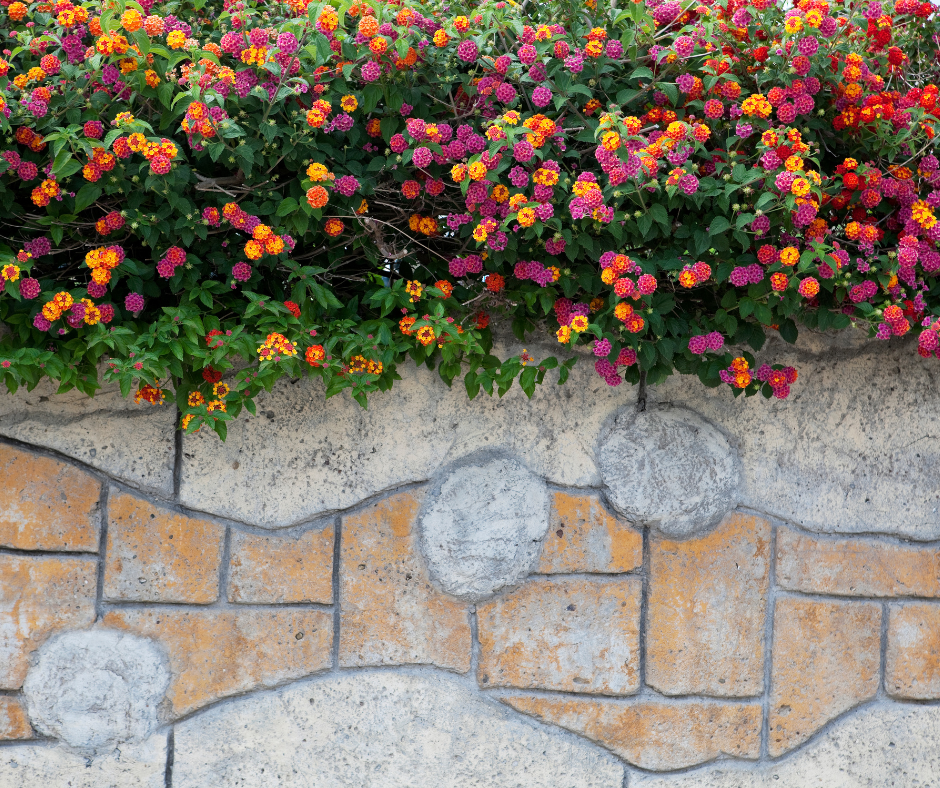
Texas Lantana (Lantana urticoides) is a resilient shrub that bursts with clusters of yellow, orange, and red flowers from spring to fall. This sun-loving plant is drought-tolerant once established and prefers well-draining soil. It’s perfect for adding long-lasting color to sunny borders or as a foundation planting.
Lantana is a magnet for butterflies and hummingbirds, enhancing the garden’s biodiversity. Its hardiness and vibrant colors make it a symbol of perseverance and vitality, embodying the spirit of the Texas landscape.
Black-eyed Susan (Rudbeckia hirta)

Black-eyed Susan (Rudbeckia hirta) brings a cheerful yellow to the garden from summer into fall. It thrives in full sun to partial shade and adapts to a variety of soil conditions. Black-eyed Susans are best planted in spring and will self-seed, ensuring a display year after year. They attract butterflies and bees, serving as a vital food source. These flowers have been a staple in American gardens for centuries, representing justice, which makes them a meaningful addition to any garden.
Bluebonnet (Lupinus texensis)
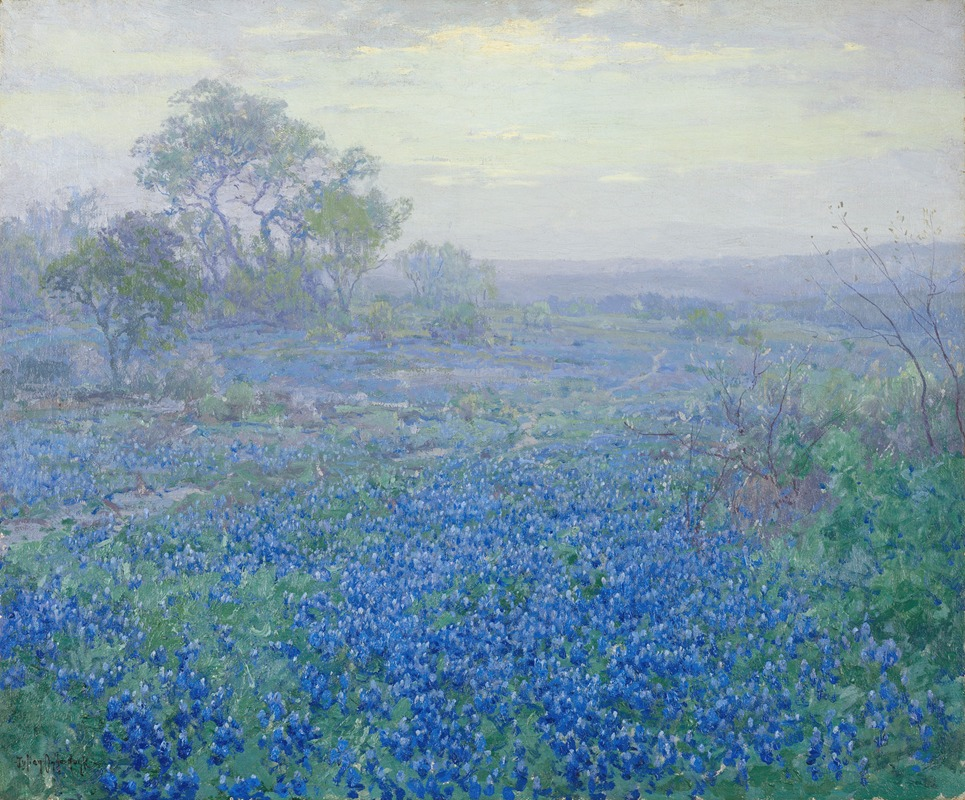
Bluebonnet (Lupinus texensis) has become an iconic symbol of Texas, heralding spring with its vibrant blue flowers. To grow this native plant, plant them in a location that receives full sun, as they thrive in well-drained soils.
These flowers prefer a start in the late fall, allowing their roots to establish through the winter for spring blooms. Bluebonnets attract bees and butterflies, contributing to the local ecosystem’s health. Historically, they hold a special place in Texan hearts, symbolizing resilience and beauty, with folklore and legends celebrating their role in the landscape.
Purple Coneflower (Echinacea purpurea)
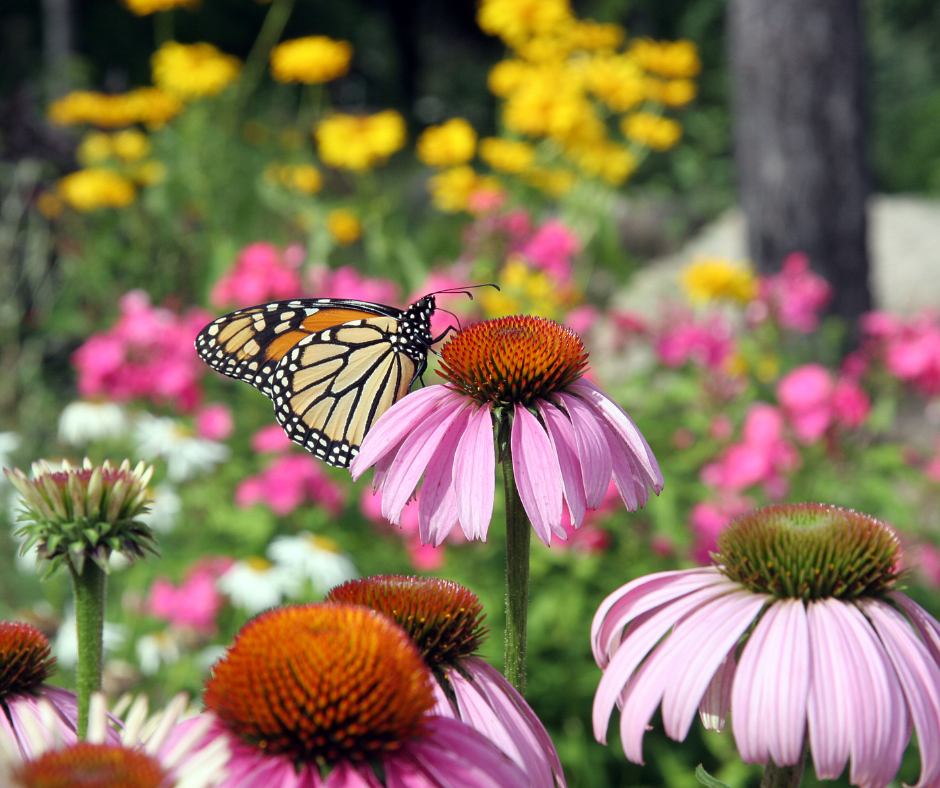
Purple Coneflower (Echinacea purpurea) is renowned for its medicinal properties and striking appearance. It flourishes in full sun to light shade and prefers well-drained soil.
Planting these flowers in native gardens can occur in early spring or early fall, with blooms from early summer to fall. Coneflowers attract butterflies and bees, promoting pollination. Historically used by Native Americans for its healing properties, it symbolizes strength and health, reflecting its role in natural medicine.
Gulf Coast Muhly Grass (Muhlenbergia capillaris)
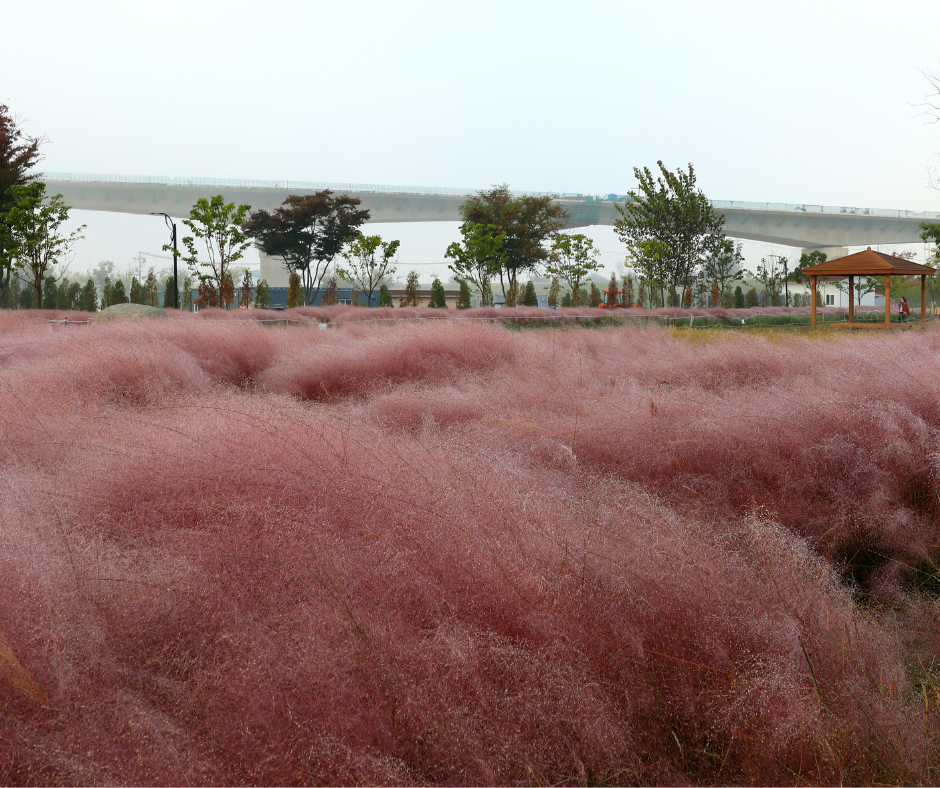
Gulf Muhly Grass (Muhlenbergia capillaris) offers a stunning display in Houston area gardens with its pinkish-purple plumes in the fall. It requires full sun and tolerates a variety of soil types, making it versatile for garden design. Plant in spring to establish roots for a fall show.
This ornamental grass attracts attention for its visual impact rather than wildlife, serving as a backdrop or accent. It symbolizes grace and movement, capturing the beauty of wind in the landscape.
Turk’s Cap (Malvaviscus arboreus var. drummondii)
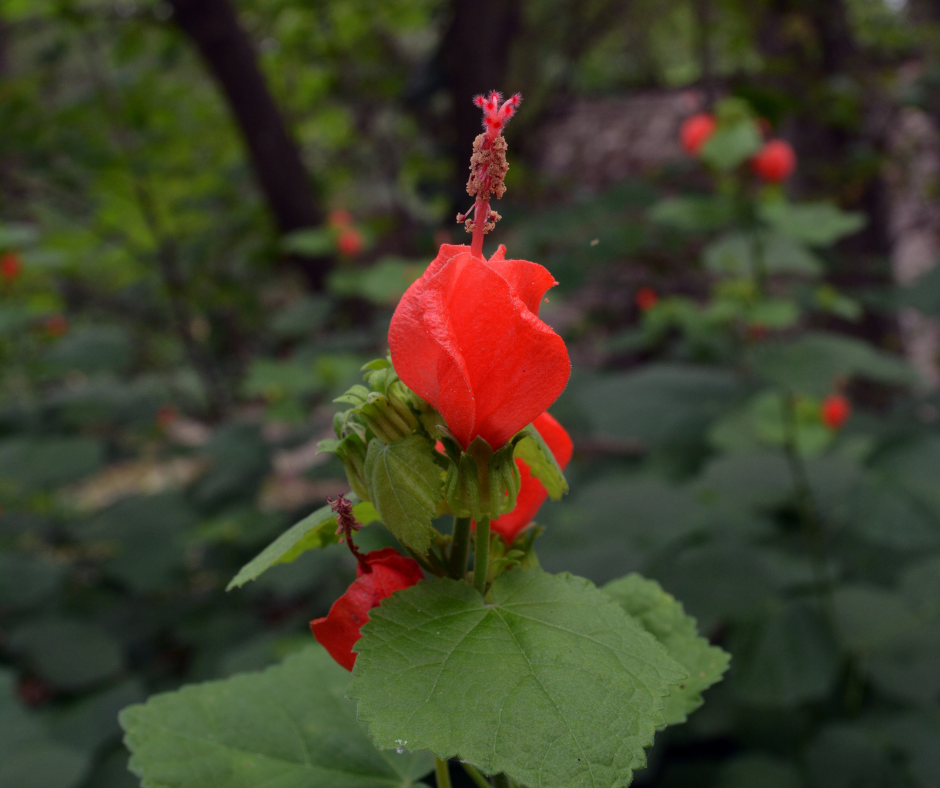
Turk’s Cap or Turkish Turban (Malvaviscus arboreus var. drummondii) is a shade-loving shrub with unique, red, turban-shaped flowers that bloom from summer to fall. Turk’s Cap flowers are characterized by their unique appearance; the petals do not fully open but rather overlap in a way that creates a tight, turban-like swirl. The overlapping petals form a closed bloom, which is visually stunning in any garden.

It’s ideal for understory planting or shady areas where few other blooms thrive. Turk’s Cap prefers moist, well-drained soil and can be planted in spring or fall. It attracts hummingbirds and butterflies, offering nectar in the shaded parts of the garden. Its distinctive flowers are associated with mystery and protection, echoing its use in traditional gardens as a hidden gem.
Coral Honeysuckle (Lonicera sempervirens)
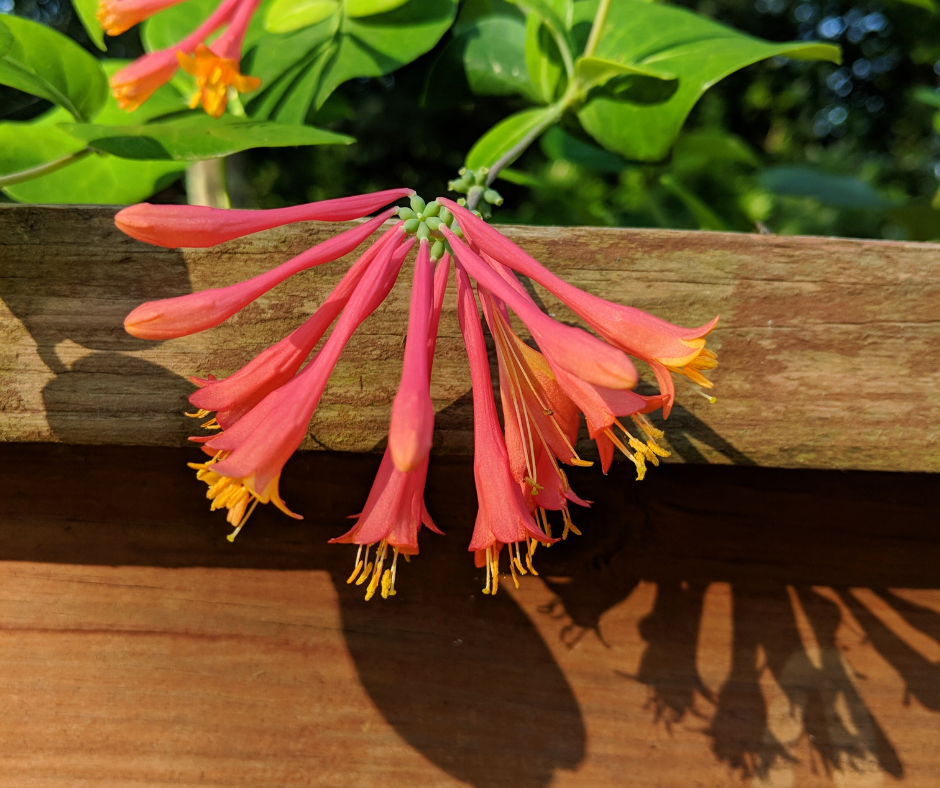
Coral Honeysuckle (Lonicera sempervirens) climbs gracefully with tubular red or coral flowers that beckon hummingbirds and beneficial insects from spring to summer. It prefers full sun to partial shade and well-drained soil, making it perfect for trellises or fences.
Coral Honeysuckle can reach heights of 10 to 20 feet tall when supported by a structure such as a trellis, fence, or arbor. Its growth habit allows it to spread and climb, creating a beautiful display of its coral-red to orange flowers.
The plant’s length can vary based on growing conditions and how much support and space it has to spread. Regular pruning and training can help manage its size and encourage a fuller, more controlled growth habit, making it a versatile choice for both small and large garden spaces.
Plant in the spring to enjoy its blooms and support wildlife. Coral Honeysuckle is symbolic of devoted affection, tying into its use in traditional medicine and gardens as a plant that binds and supports, much like its growth habit.
American Beautyberry (Callicarpa americana)
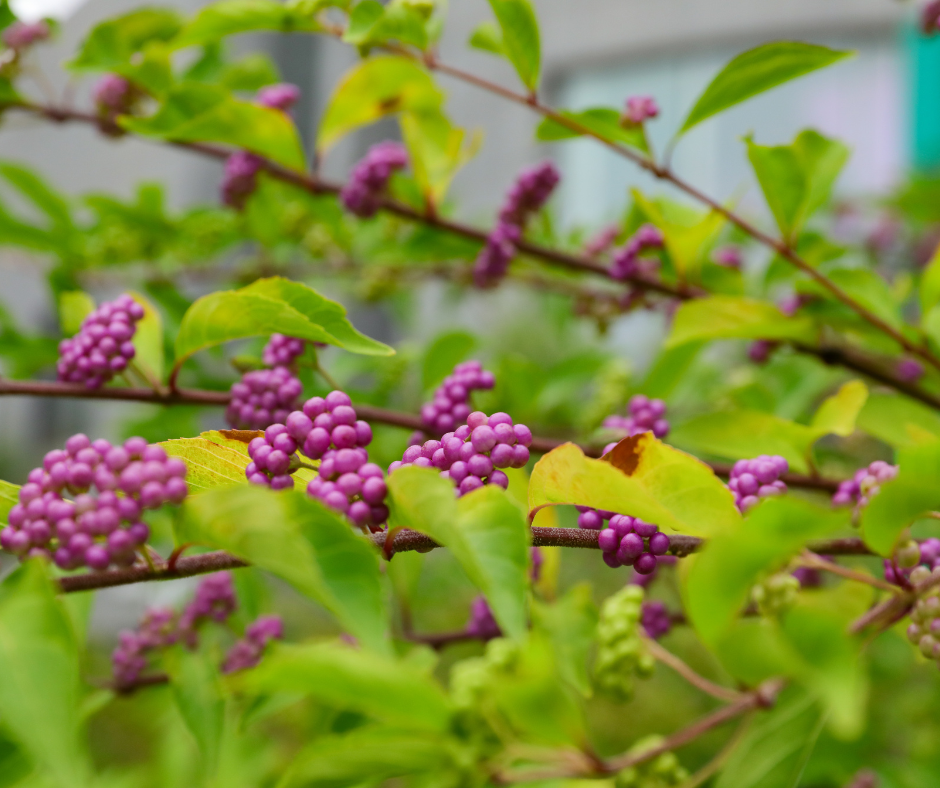
American Beautyberry (Callicarpa americana) is a deciduous spreading shrub celebrated for its striking purple berries in fall. It thrives in partial shade to full sun and adapts to various soil conditions.
Plant in early to late spring so this plant will produce berries that are both beautiful and provide food for birds. The beautyberry symbolizes abundance and protection, reflecting its role in the ecosystem as a source of nourishment for wildlife.
Texas Sage (Salvia coccinea)
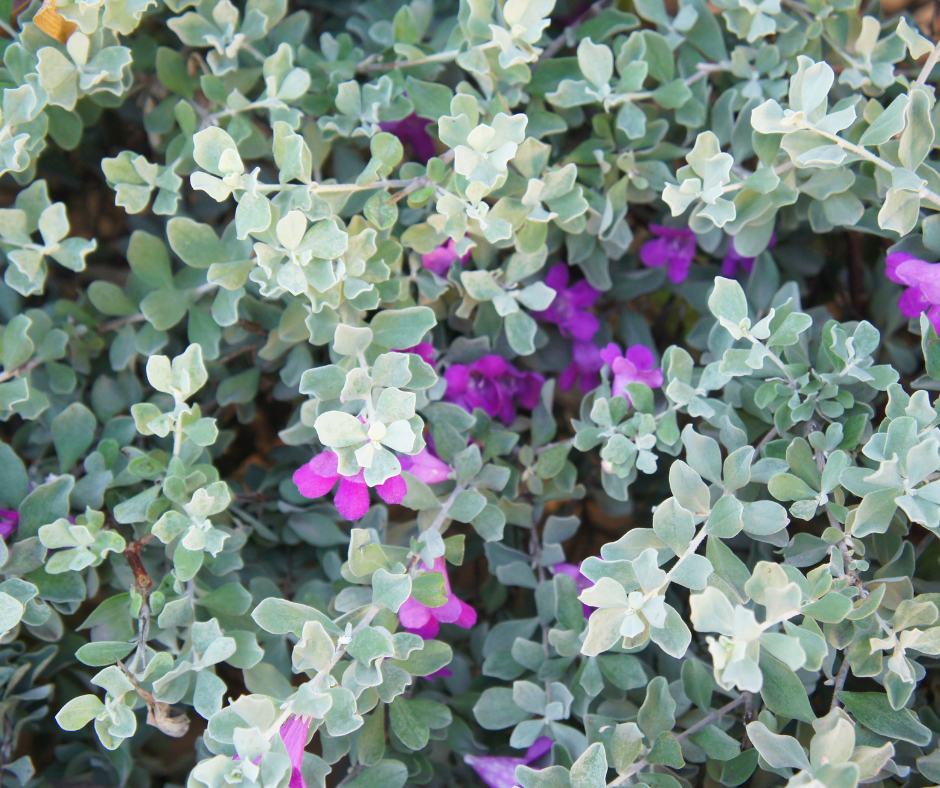
Texas Sage (Salvia coccinea), with its red, pink, or white flowers, is a drought-tolerant gem that blooms from spring to frost. This low maintenance sage loves full sun and good drainage, perfect for xeriscaping, rocky slopes, or dry garden areas.
Native to Texas, this plant grows well alongside non-native plants. Texas Sage can be planted in spring and attracts hummingbirds and butterflies, enhancing garden biodiversity. Its enduring blooms symbolize endurance and the ability to thrive in challenging conditions, mirroring the resilient spirit of the Texas landscape.
Yellow Bells (Tecoma stans)
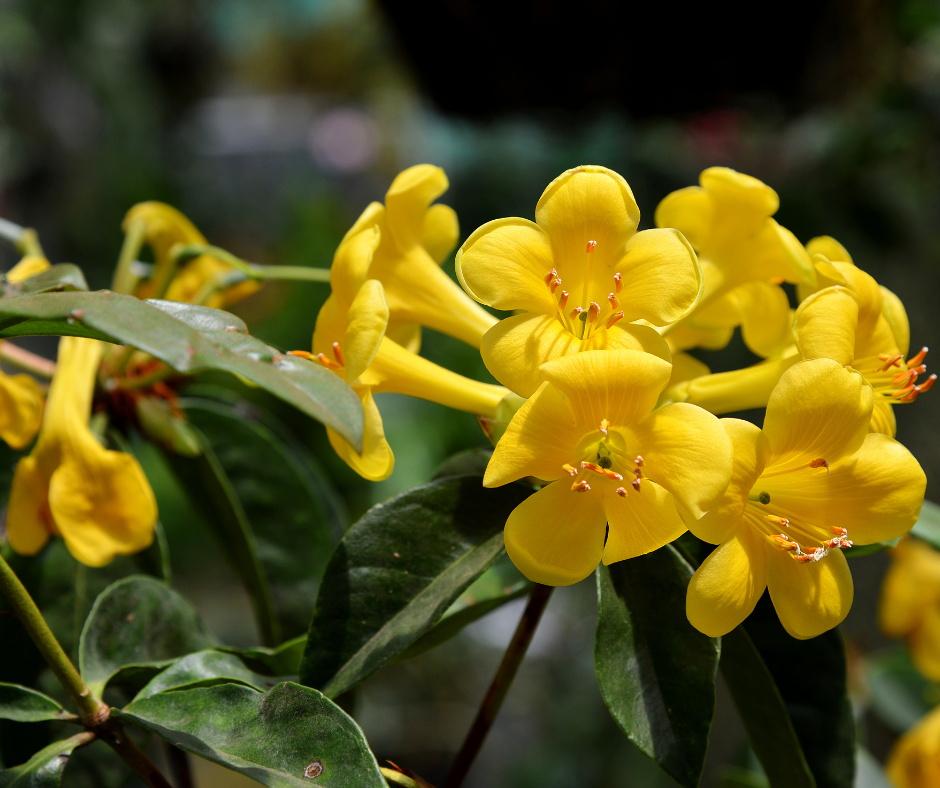
Yellow Bells (Tecoma stans), also known as Esperanza, are vibrant shrubs that light up gardens with their bright yellow, trumpet-shaped flowers. They thrive in the warm climates of Houston and are beloved for their long blooming season, which can extend from early summer until the first frost.
To successfully grow Yellow Bells, choose a sunny spot in your garden as these plants love full sun and well-drained soil. They are quite drought-tolerant once established, making them a great choice for xeriscaping or for gardeners seeking low-maintenance plants.
Plant Yellow Bells in spring or early summer to allow them time to establish before the blooming season. They can be used as a stunning focal point in a sunny border, or planted in groups for a dramatic display.
Yellow Bells can also be grown in containers, where they can be moved to optimize sunlight exposure. These shrubs attract a variety of pollinators, including bees, butterflies, and hummingbirds, adding life and color to your garden.
Historically, Yellow Bells have been used in traditional medicine across various cultures, attributed with properties ranging from antidiabetic to antimalarial effects. Their bright yellow flowers are not only a symbol of warmth and energy but also reflect the plant’s resilience and ability to thrive in harsh conditions.
Adding Yellow Bells to your garden brings a touch of sunshine and a sense of vitality, making it a favorite among gardeners and wildlife alike.
Ready to Transform Your Houston Garden with Native Plants?

Embracing a native garden filled with Houston plants fosters a deep connection with the local ecosystem, supporting biodiversity and offering a sanctuary for pollinators and wildlife. Moreover, native plants are well-adapted to the regional climate, requiring less water and maintenance, which underscores their value in sustainable landscaping.
Of course, we cannot overstate the importance of partnering with a design firm that understands the unique demands of a Houston garden. This type of local landscape design expertise ensures that the characteristics and requirements of each plant are considered—creating harmonious, resilient, and thriving gardens.
By working with a local firm, homeowners can not only celebrate the beauty of Houston’s native flora but also contribute to the preservation and enrichment of our local environment for generations to come. We also recommend that you contact the Houston chapter of the Native Plant Society, as they will provide excellent guidance on how to create a pollinator garden in Texas.



